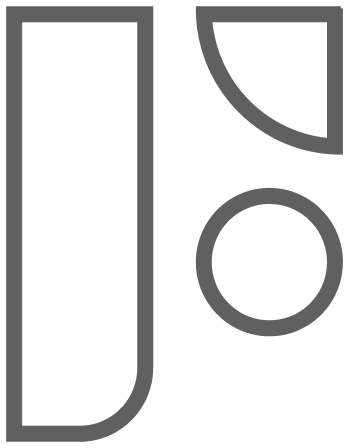The waste incineration plant in Kristiansand, Norway, plays a crucial role in managing municipal waste for households in the southern part of Norway, as well as a significant amount of commercial waste. This facility not only handles waste disposal but also transforms waste into valuable energy, generating 11-12 megawatts of electrical power and providing 30-35 megawatts of district heating. However, the plant faces ongoing challenges in maintaining efficient operations and meeting the ever-increasing demand for waste processing. How can they ensure a steady burn of waste material to keep the steam generator running smoothly? How can they integrate new methods to enhance their combustion process without disrupting the existing system?
Significant advancements
In this case study we will explore the traditional waste incineration process, the inherent challenges, and how FOCUS-ON’s innovative smart meter valves have revolutionized operations at the Kristiansand plant. By introducing FOCUS-ON’s smart meter valves, the plant has achieved significant advancements in efficiency and control, overcoming previous limitations. To get an in-depth look at how FOCUS-ON’s solutions have transformed the waste incineration process at the Kristiansand plant, we encourage you to watch this video case study first. Hear from the team members themselves as they walk you through the plant, the process, and their collaboration with FOCUS-ON. After watching the video, continue reading for a detailed exploration of the challenges, solutions, and benefits realized through this innovative partnership.
The Challenges of Traditional Waste Incineration Process
Waste incineration involves burning waste materials to reduce their volume and convert them into energy. In Kristiansand, the process begins with receiving the waste, which is then fed into the incineration chamber. The plant produces 50 bars of steam, which drives a steam turbine connected to a generator. This setup provides around 11-12 megawatts of electrical power to the grid and with the condense water of the steam generator they deliver 30-35 megawatts of district heating to the areas around the incineration plant.
Crucial operation pilot for future waste burning
At Returkraft, the efficient operation of the waste-to-energy plant is crucial for maintaining a consistent generation of district heating and electricity. Traditional waste incineration processes face several challenges. The ever-increasing demand for waste processing and the fluctuating nature of waste composition necessitate a flexible and responsive system. Ensuring a steady burn of waste material to keep the steam generator running efficiently has always been a primary challenge. To address this, Returkraft initiated an innovative pilot project to add wastewater directly into the furnace using a control valve. Traditionally, controlling the precise amount of waste material fed into the incineration chamber, especially when introducing liquid waste, has been complex and inefficient. The addition of wastewater needs to be meticulously controlled. The flow rate must be precisely regulated to avoid excessive use of wastewater and to prevent any negative impact on the furnace flames. Maintaining the correct balance is essential to ensure the flames remain stable and the combustion process is not disrupted. Accurate and responsive control is necessary to optimize the combustion process and maintain the efficiency and safety of the steam generator. Integrating this process with the existing system posed significant challenges. This is where FOCUS-ON’s smart meter valves came into play. The implementation of FOCUS-1 provided the integrated control and measurement system required for this delicate balance, ensuring precise regulation of the wastewater flow into the furnace and thereby enhancing the overall efficiency of the plant.

Optimization of the Waste Incineration Process
FOCUS-ON’s smart meter valves, specifically the FOCUS-1, addressed the challenges faced by the Kristiansand plant. The FOCUS-1 smart meter valves simplified the process of introducing liquid waste into the furnace. Unlike traditional setups that require multiple components such as flow meters and valves, FOCUS-1 integrated these functionalities into a single unit. This not only reduced the complexity of the system but also streamlined the installation process. By using FOCUS-1, the plant could easily control the right flow amount of liquid waste fed into the furnace. The system connected seamlessly with the PROFINET system, allowing quick setup without the need for extensive programming. The plant operators could set the desired set point directly, monitor all measurements, and achieve quick and precise control over the process.
Benefits for Returkraft
The implementation of FOCUS-1 brought numerous benefits to the Kristiansand waste incineration plant:
- Ease of Installation: With fewer components needed, the installation process was straightforward and quick.
- Quick Setup: Integration with the Siemens system through PROFINET allowed for rapid setup and commissioning.
- Simplified Control: Operators could set desired parameters without complex programming, making the system more user-friendly.
- Real-time Monitoring: The ability to monitor all measurements in real-time enabled prompt adjustments and improved process control.
- Efficiency and Reliability: The streamlined system reduced potential points of failure, enhancing overall reliability and efficiency.
In conclusion, the use of FOCUS-ON’s smart meter valves has significantly optimized the waste incineration process at the Kristiansand plant. By addressing the inherent challenges of traditional systems, FOCUS-1 has paved the way for greater innovation and efficiency in waste management and energy production.
Curious about the FOCUS-1 benefits for you?
Get in touch to talk about the benefits of the FOCUS-1, to plan a demo or to talk about the possibilities of a proof-of-concept!




